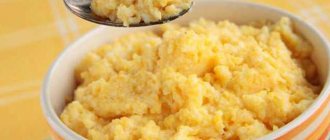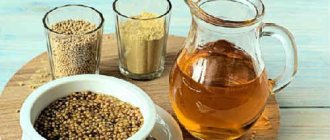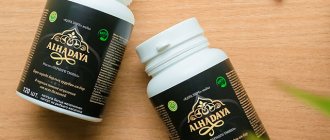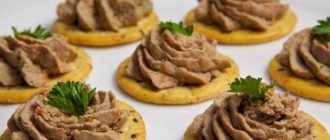Dear readers, almost each of you starts your day with a sandwich or hot porridge with butter. And it is right. Because its beneficial substances have a beneficial effect on the stomach and leave you feeling full longer. Everyone knows butter, but not everyone knows what beneficial properties it has. Today we are talking about how butter acts on our body, what it is made from, what is considered high quality and who it harms.
Butter - good or bad?
Many people love butter because it is tasty and healthy, quickly absorbed by the body and quickly gives a feeling of fullness. Do you know what its benefits are? Besides this, it has many useful properties.
- It has a wound-healing effect, making the oil effective for gastric ulcers and duodenal ulcers.
- Relieves inflammatory processes in gastritis and pancreatitis.
- Helps normalize lipids and cholesterol levels in the blood, participates in the production of bile acids.
- Improves metabolism and helps absorb minerals and vitamins.
- Helps in the prevention of osteoporosis and rickets.
- Reduces the risk of developing cancer.
- Preserves the functions of the visual organs.
- Improves mental abilities, memory, attention, especially in children.
- Participates in the production of sex hormones necessary for a regular menstrual cycle and for conception.
- Adds shine to hair, makes skin and nails beautiful.
Of course, the beneficial properties are more pronounced if the product has not been subjected to heat treatment, since at high temperatures many biologically active substances are destroyed.
But such varieties as sandwich, tea, chocolate or butter with other fillers can hardly be considered healthy, since they contain preservatives, flavors and emulsifiers, so it is difficult to call them oil, these are spreads. And such oil is unlikely to bring health benefits.
Who is butter contraindicated for?
You can’t spoil porridge with butter, everyone knows this saying. But we must keep in mind that butter is a high-calorie product that is easily absorbed by the body and contains a large amount of cholesterol, which negatively affects the condition of blood vessels and can cause atherosclerosis.
High cholesterol levels, in turn, can cause the development of hypertension, strokes, and myocardial infarctions. Therefore, people with similar health problems should limit or exclude this product from their diet. By giving up oil, over time, as scientists have proven, your general condition will improve, and the disease may even recede.
The spread can negatively affect metabolism and hormonal levels, which in turn are precursors to atherosclerosis or oncology. Trans fats are unnatural for human physiological processes, so the body cannot remove their breakdown products, which leads to the development of diseases of the gastrointestinal tract and cardiovascular system.
Butter is a product that does not cause allergies. But allergic reactions can occur in people who are particularly sensitive to milk protein, this must be remembered. An allergic reaction can develop to various fillers - preservatives, flavors, stabilizers, which are found in spreads.
Composition of butter
To obtain butter, it is necessary to separate or whip the cream from milk; cow's milk is often used, less often goat's milk or the milk of other animals.
The main component of butter is milk fat. Its amount here can reach up to 80%. And all other components are just inclusions. This is the fundamental difference between butter and the cream from which it is obtained. If cream is mostly water with fat floating in it, then butter is fat with a little water.
In addition to milk fat, butter contains proteins, carbohydrates, vitamins and minerals. It must be said that butter made from summer milk contains a greater amount of useful substances. This is understandable.
The chemical composition is varied. The composition contains vitamins A, D, E, C, PP, K, B vitamins (thiamine - B1, riboflavin - B2, pantothenic acid - B5, folic acid - B9; B6, B12). There are few minerals, these are potassium, calcium, magnesium, sodium, and trace elements - iron, phosphorus, zinc, manganese, copper. Fatty acids are Omega 3 and Omega 6, other trans fats and cholesterol.
It is difficult to consider oil as a source of vitamins and minerals, since there are few useful substances, despite their diversity in quantity, and we use it in small quantities. But any dish will be much tastier and more satisfying if butter is added to it.
Calorie content
If you look at the packaging how many calories are in butter, you might be surprised - there are 748 kcal per 100 grams. However, you need to understand that 100 grams is only half a pack of butter, and no one will eat it in such huge quantities. Based on fat content, like other dairy products, it is divided into traditional (82.5%), amateur (80%), peasant (72.5%), sandwich (61%) and tea (50%).
The composition looks like this:
- 0.8 g carbohydrates;
- 0.5 g protein;
- 82.5 g fat.
Despite their high calorie content, they can be used for health benefits. Due to the fact that this product is easily absorbed by the body, it is an excellent way to quickly obtain and replenish energy. Accordingly, it is best to consume it in the morning or as a snack to get a boost of energy.
| Sandwiches | Calorie content |
| When preparing a sandwich from 10 g of hard cheese, 5 g of butter and a piece of bread weighing 5 g. | It will be 194 kcal. |
| From a creamy product weighing 10 grams and a piece of white bread 30 grams you will get such a sandwich. | Approximately 154 kcal. |
We recommend eating bread with butter, spread in a thin layer. Then the calorie content of the sandwich will be significantly lower. You can eat a sandwich with tea and have a good meal, while getting a lot of useful substances and a small amount of calories.
Advice from nutritionist Irina Shilina Pay attention to the latest weight loss method. Suitable for those for whom sports activities are contraindicated. Read more
Quite often there is information about the benefits of milk fat substitutes. However, most plant analogues in their composition are not the most useful products, and sometimes even hazardous to health. Their consumption does not help improve health and lose weight, and can even worsen human health.
Despite the calorie content of butter, it is much healthier than margarine and other substitutes in the form of “light” oils.
Calorie content of butter
The calorie content is quite high and per 100 grams of a traditional product is 748 kcal. This should be taken into account by those who are planning to lose weight. When creating a menu for weight loss, you will have to exclude this product from your diet.
It is practically not used as an independent dish. Most often it is used in combination with other products in sandwiches or added to porridge, fried and added to dough, soups or cream. Therefore, it should not be considered as a source of a large amount of calories, but provided that you eat no more than 20-25 grams of it daily.
Recommendations for product use
Is it good to eat butter for breakfast? Milk fat is best eaten in the morning, in the first half of the day. Nutritionists recommend combining it with slow carbohydrates - whole grain bread, cereals and vegetables.
The daily dose for a healthy adult is 10-15 g . One teaspoon contains 5 g. With high physical activity, the amount of product consumed at a time can be increased to 30 g.
School-age children with moderate physical activity should not be given more than 5 g per day until they are 12 years old. Then the amount can be increased to 10 g.
In old age, the product can be eaten no more than three times a week, 5 g at a time.
REFERENCE! A sandwich consisting of yeast-free whole grain bread, butter and honey is balanced in energy composition.
It serves as an excellent alternative to pastries and pies, having high biological value. The sandwich can be sprinkled with cinnamon on top. Then it will protect the body from infection by parasites.
In cooking
Butter is widely used in baking buns, cakes, cookies, and for frying. It is not beneficial, but replacing it with margarine is destructive for the body .
It is added to give a pleasant creamy taste to soups, pasta, purees, and vegetable stews. It is very useful to combine with spices, herbs and citrus zest, mixing them until smooth. This improves the absorption of fillers and prevents the deposition of cholesterol on the walls of blood vessels.
From this video you will learn the recipe for making the famous Bechamel sauce from the chef based on natural butter:
Dieting
Oddly enough, milk fat promotes weight loss when consumed no more than 5 g at a time. This should be done every morning, adding to porridge cooked in water, or spreading on diet bread.
If you have an increased appetite, you need to eat it within 20 minutes. Before meals, a piece of black bread with salt, greased with a thin layer of butter. But it must be excluded from breakfast, replacing it with low-fat cottage cheese or eggs.
Traditional recipes for treating diseases
Alternative medicine uses creamy grace for both internal and external use.
For colds
A glass of hot milk with butter and honey is a well-known cold remedy. Instead of honey, you can take 10 ml of cognac or rum.
From worms
Drinking 25 ml of hot Cahors with 5 g of creamy product mixed with cinnamon every night for a month will not only get rid of parasites, but also normalize intestinal function.
The course can be repeated every three months.
For rheumatism
Melt 100 g in a water bath, mix with 10 g of bodyaga, cool. Rub on sore areas every night before bed, after a warm bath.
For arthritis
Grind the fresh lingonberry leaf as finely as possible. Mix with softened creamy product in the amount of 50 g in an arbitrary proportion. There is no need to cook a lot, as the mixture quickly deteriorates even in the refrigerator. Make a compress from the resulting ointment every other day for two months. Treatment should be combined with a diet prescribed by your doctor.
Find out on our website whether quail eggs are healthy and some tips on how to choose them.
Do you know the benefits of duck eggs? For composition, taste, calorie content, recommendations for consumption, look in this article.
A few words about the benefits of lard for the body! We’ll tell you how to use the product correctly so as not to harm your health here: .
The benefits of butter
For children
The presence of a large amount of vitamins, mineral salts, especially calcium and phosphorus, which are needed for the child’s bones, and omega fatty acids - everything says that the oil will only bring benefits for a small baby.
Babies can start giving butter from the age of 5 months. First, add it to vegetable purees in an amount of 1-4 grams. Then gradually add to the porridge. At 7-8 months, the weight of a piece of butter can be increased to 5 grams, and then by 3 years, up to 15 g of butter can be given.
Children and schoolchildren simply need oil. The fats contained in the oil are needed for normal brain function; their deficiency will immediately result in fatigue, apathy, or, conversely, aggression. With daily consumption of 10 g of oil for breakfast in the form of a sandwich or added to porridge, it will promote normal mental development, improve memory and give strength.
For pregnant
Pregnancy is a special period in the life of every woman and each of them dreams that their baby will be born healthy. Nutrition is important for the course of a normal pregnancy, so that the child, during intrauterine development, receives all the beneficial substances necessary for its growth. The cholesterol contained in the oil promotes the production of sex hormones and is a necessary component for the construction of cells.
One of the must-have products for a future mother should be butter. The calcium contained in the oil is necessary for the development of the baby's skeletal system. Vitamins and omega fatty acids are necessary for a woman to improve the condition of her skin, hair, teeth and nails, and improve vision.
Oil is high in calories, but if you stick to the norm of 20-25 g for breakfast with a sandwich or adding it to porridge, there will be no harm to either the woman or the child. But such a breakfast will give a woman energy and allow her to feel full until lunch.
For type 2 diabetes
Since it is important to follow a diet if you have diabetes, the question is often asked whether butter can be included in the diet. Yes, the glycemic index of butter is high, but this is not a reason to refuse butter to such patients. But the following points must be taken into account.
Fatty and high-calorie foods, and butter belongs to this category, are not welcomed by nutritionists and endocrinologists. But the benefits of oil for the body are significant, which means it must be consumed. There will be no harm if you add 10-15 g of oil to the porridge per day.
But if you add the same 15 g of butter to a huge slice of white bread, then it will already be too much. Hence the conclusion: oil will not cause harm if the calorie content of the dish in the total amount of food does not go off scale, that is, moderation is needed in everything.
It is not just the presence or absence of butter in the diet that is important, but its balance with the overall diet.
For the liver
The liver is the main organ that cleanses the body of various poisons, wastes and toxins. And any liver disease that subsequently requires its restoration requires strict adherence to a diet, which includes avoiding fatty foods. But what about butter?
In case of acute liver diseases and their exacerbation, it is necessary to completely eliminate the oil until the patient’s general condition is stabilized and the tests are normalized.
But if the disease is in remission, then 15-20 g of butter in porridge or on a sandwich will not harm. The oil will increase resistance to disease, improve the passage and absorption of food and improve mood.
A similar approach to butter will be relevant not only for hepatitis, but also for gastritis and pancreatitis.
Features of the effect on the body
The product has high energy value. It must be consumed in very moderate quantities so as not to accumulate excess fat deposits. Official medicine also explains the harm by the presence of cholesterol in it, which can be deposited on the walls of arteries and blood vessels.
With a reasonable approach to nutrition, butter has only a positive effect on the body, balancing the nervous and endocrine systems.
For adult men and women
The cholesterol contained in the product is actively involved in the formation of sex hormones.
If it does not enter the body of an adult with food, then women may develop:
- infertility;
- menstrual irregularities;
- depression.
All these ailments quickly disappear when the diet is normalized.
Men need the product for:
- prevention of neuroses;
- improving the quality of potency;
- increasing endurance during physical activity.
Butter can also reduce the harm from smoking and drinking alcohol. The benefit of butter for the female and male body is that it significantly improves the condition of the skin and improves visual acuity due to the presence of vitamin A.
Pregnant and lactating
For pregnant women, butter should be included in the list of foods necessary for health, since natural cholesterol is actively involved in the formation of nerve cells responsible for the future intellectual development of the baby.
At the same time, milk fat gradually prepares the expectant mother’s body for full lactation, creating reserves of calcium, vitamin A and D.
During breastfeeding, the consumption of milk fat becomes an urgent need, since it:
- Enhances lactation, improving the composition of breast milk.
- Supports the body of a nursing mother at a high energy level.
- Allows you to maintain the beauty and health of your skin, teeth, and nails after finishing feeding.
- Protects the baby's body from the development of rickets.
- Promotes emotional balance between mother and child, improves their sleep.
This product is especially useful for nursing mothers of premature babies. Natural cholesterol supplied with milk will quickly restore the nervous system and ensure full physical and mental development.
What is good for a child
Children need natural milk fat in their diet during high physical and mental stress.
For preschool children who lead a sedentary lifestyle, it is better to replace the fatty option with milk or kefir, so as not to create preconditions for obesity.
However, if the child is very active and emotionally excitable, then consuming the product with buckwheat or oatmeal will help correct behavior in the absence of pathologies from the nervous system.
Butter is very useful for schoolchildren in small quantities . It promotes rapid assimilation of educational material and prevents fatigue.
Nutritionists believe that in children, fats burn in the flames of carbohydrates. Therefore, it is better to give the product to the child with porridge, potatoes or bread, avoiding combinations with animal proteins.
Is it harmful in old age?
After 55 years, the consumption of milk fat in any form should be sharply limited , since due to age-related changes, absorption becomes difficult, especially in large quantities and in combination with animal proteins. This can lead to disruption of the heart and blood vessels.
However, it is not recommended to completely exclude it from the diet. Milk fat has a positive effect on joints and the condition of connective tissues. Butter in small quantities in old age is necessary for:
- prevention of osteoporosis;
- maintaining mental activity;
- stabilization of hormonal levels.
Butter - how to determine quality
Nowadays it is difficult to find high-quality oil. Even by reading the ingredients on the label, we risk buying a fake. It is quite possible to buy a spread with a large amount of trans fats. I found information that the quality of the oil can be checked by shining it with a fluorescent lamp. Know that trans fats have a blue glow, while real oil will be yellow. But hardly any of us goes to the store with such a device. Then how do you know if you bought real butter or a spread?
When purchasing in a store, carefully read what is written on the package.
- The name of the product should say “oil”. If this word is not on the package, then you are buying a spread or, in general, a fake.
- The fat content of the product should not be lower than 72.5% fat content. Anything below this figure is spreads.
- High-quality oil is produced in accordance with GOST 37-91 or GOST R 52100-2003. This is the product that contains all the useful substances and is not a spread or counterfeit.
- If the composition contains vegetable cream or vegetable fats, think about the purchase: will it bring health benefits? If there are any, this indicates that it is a spread (translated as soft butter). The spread will spread well on the sandwich, even if it has just come out of the refrigerator.
- Real butter should not cost 80 - 100 rubles for a 200-gram pack.
- Often there are promotions in trade and products are sold at a reduced price. This also applies to our product. Knowing the shelf life, think about whether you need to buy oil that may have already oxidized or deteriorated.
- It is better to buy butter in foil paper. Transparent parchment is more susceptible to light degradation and oxidation. Also, when defrosting and re-freezing, the packaging becomes deformed.
To be sure of purchasing a quality product, use these tips on how to test butter for quality at home.
- Take a piece of butter into your mouth and feel its taste: real butter should not have any foreign aftertaste and will quickly melt in your mouth.
- Place a piece of butter in a glass of hot water, stir and let it settle. If it is not a fake or a spread, then it will mix well and will not give sediment.
- Put the butter in the freezer, and then try spreading a piece on bread. Real butter will not spread, but will crumble.
- When you heat real butter in a hot frying pan, foam will appear as it melts, and the melted butter will smell delicious.
- If water droplets begin to appear on frozen butter left at room temperature, it is a spread. Real butter will soften at room temperature and can easily be spread on bread.
Application
Butter is used as an independent food product for serving, sandwiches, topping ready-made hot dishes, soups, side dishes, as well as for preparing various sauces, dough and creams. Oil can be used for frying foods, but during the heat treatment there is a significant reduction in nutrients in the product.
Market Analytics
- COVID-19 is changing the rules of the game in the cosmetics market
- Beauty of the future: cosmetic innovations 2020
- New ingredients are the driving force of the cosmetics industry
Convenient search for beauty salons on our website
Beauty salons in Moscow Beauty salons in St. Petersburg Beauty salons in Ekaterinburg Beauty salons in Novosibirsk
Latest blog posts on our website
- Naturecream / Geranium (Pelargonium) oil for skin health and beauty
- Prostye-sovety / Save on a beauty salon: procedures that can be done at home
- Naturecream / Growth Factor - brings back youth?
- Oksana-Lezina / 3 effective abdominal exercises from a fitness instructor for beginners
- Prostye-sovety / Making perfect curls at home
- Prostye-sovety / Which hair removal method to choose
- Naturecream / Wrinkles Puppets
- Naturecream / PEPHA-TIGHT - instant skin lifting
- Naturecream / Blue light - a danger to the skin
- Naturecream / Cocoa Butter – A treat for the skin
Latest forum topics on our website
- Mrs._Smith / Badly sunburned! What to do?((
- Ice / Is it necessary to combine fitness classes with a diet?
- Antonova / What can be used for hair loss?
- Radio operatorKat / Who was on a protein diet?
- Suzanna / Mesotherapy on the face
Other articles in this section
| Cream margarine Close in composition to butter, cream margarine is considered. It contains animal fats and vegetable oils. Moreover, it contains up to 25% butter. |
| Mustard oil If you go deeper into history, you can see that wild mustard was first mentioned in the 1st century BC. East Asia is conventionally considered the birthplace of mustard seeds. However, it was no less popular in Ancient Greece due to its piquant taste and medicinal properties, which had a beneficial effect on the body as a whole. |
| Olive oil Olive oil is obtained from the fruit of the European olive tree. Another name for the plant is olive tree. It is most widespread throughout the Mediterranean region. Externally it is a tree growing up to 10 meters. This oil, like other vegetable oils, has an ancient history. |
| Rendered pork fat |
| Sunflower oil Sunflower oil is obtained from sunflower seeds, a crop that has long been grown for oil production. Sunflower is one of the most accessible and cheapest sources of vegetable oil, therefore it is widely cultivated in many countries. Sunflower oil is very common on sale in our country; in popularity it exceeds such well-known vegetable oils as olive oil in other countries. |
| Unrefined vegetable oil There is not a single housewife who would not use vegetable oil in her culinary skills. The taste qualities, undoubted benefits of the product and its low cost have brought this product to a leading position in the food industry and for home use. It is obtained from seeds, nuts and fruits of oilseeds by pressing at low temperatures. |
| Hemp oil Hemp is a common plant that has been growing on the territory of modern Russia since ancient times. And if previously it was used to produce oils, now hemp oil is not produced, but is imported from England, Canada, the Czech Republic and other countries where industrial hemp is cultivated. A possible reason is a number of restrictions on the cultivation of this plant in Russia due to its potential use for the manufacture of prohibited products. |
| Ylang-ylang oil The homeland of the fragrant tree (as ylang-ylang is translated) is the Philippine Islands. This plant grows on the coasts of Malaysia and Madagascar, Java and Indonesia, the flowers of which are used to prepare an unusually aromatic and very healthy oil. Already in 1890, European perfumers widely practiced the use of this unusual aroma. Although the composition and chemical properties of this product have not yet been sufficiently studied, its effective effect on various body systems is beyond doubt. |
| Margarine Extra The history of margarine goes back many years. For the first time, this product was created in order to produce complete nutrition for soldiers in military service in order to fully replace butter. The production of margarine was more economical, using chemicals, the main one of which was the so-called “salomas”. The first versions of the product were not very successful, they did not have a good taste, but over time the situation changed dramatically. Modern types of margarine are made from natural ingredients; they are not inferior in taste to butter, and in some respects even surpass them. |
| Rendered bone fat Fat is produced from different bones, but the vertebrae and ribs are not involved in this process. Since the amount of fatty acids in the product is different, the melting and cooling temperature is completely different for rendered bone fat. In the USSR in the sixties, fat was made only in accordance with GOST 1288–55 - for the highest grade. The color of the highest grade was necessarily white, but sometimes it could be greenish - this was considered the norm. Heated fat becomes transparent. If the temperature is kept at 18 degrees, then the fat is creamy; at higher temperatures, it is liquid. It has no extra smell, only the inherent smell of this fat. At the same time, the smell of the broth is of high-quality 1st grade fat. Fats are stored in wooden containers. |
Butter or spread?
In stores we often find oil with a fat content of 72.5%. It is also found with a fat content of 82.5%, which is best suited for making ghee. But there are other types and they differ depending on the amount of fat in it.
Real oil should be considered to be one in which the fat content is at least 82.5%. Everything else can be considered spreads, since they may contain various additions: table salt, carotene, lactic bacteria, they do not pose a health hazard. More useful varieties include such varieties as amateur or peasant oil.
But such varieties as sandwich, tea, chocolate or butter with other fillers can hardly be considered healthy, since they contain preservatives, flavors and emulsifiers, so it is difficult to call them oil, these are spreads. And such oil is unlikely to bring health benefits.
Shelf life of butter
There will be no harm from butter if you use and store it correctly. So, when frying, the oil burns out and forms more carcinogenic substances, and the taste will no longer be pleasant.
It must be borne in mind that oil is a perishable product and is an excellent breeding ground for bacteria.
Butter packaged in parchment paper can be stored for no more than 10 days, but if it is packaged in laminated foil - no more than 20 days in a household refrigerator. Products packaged in small cups or boxes are stored even shorter, no more than a week. But factory-made can be stored in a special refrigerator for up to 3 months.
It is not recommended to store oil at room temperature, but it will oxidize faster, go rancid, and become tasteless.
To avoid causing food poisoning, cut off the butter with a clean knife. By chopping vegetables or chicken first and then cutting oil to fry them, you run the risk of contaminating it with germs. The temperature of the refrigerator will be quite enough for the growth of pathogenic microflora in the oil, which was introduced from the knife, to begin.
Interesting facts about butter
- This dairy and animal product appeared later than cheese. At the beginning of its appearance as a food product, it was whipped by the Sumerians for medicinal purposes.
- It may seem surprising, but this is true: the quality and taste of the oil depends on the pasture of the cow. In other words, what kind of food the cattle’s stomach digests, so will the milk it gives. This means cream, sour cream, cottage cheese, and butter...
- Butter is rightly called food for the mind. Fats in its composition are involved in the process of cell renewal and construction, especially in the tissues of the brain and nerve fibers.
- When preparing hot dishes, do not use butter - useful substances and vitamins are lost. Best use: sandwiches and seasoning for prepared dishes.
- More than 5 million tons of this dairy product are consumed in the world in 1 year.
Video about the benefits of butter:
How to make butter at home - recipe
Of course, I don’t argue why bother making butter at home if you can buy it in any store without any problems. Yes I agree with you. But if you prepare the oil yourself, you will notice the difference in taste.
But all you need to prepare it is homemade sour cream; store-bought sour cream probably won’t do. And with modern household appliances, in particular a mixer, homemade butter can be prepared quickly and without problems. I offer a recipe for making butter at home.
To make butter you will need 1.5 liters of homemade sour cream, a mixer and desire. As a result, you will get approximately 750-800 g of homemade butter and buttermilk, from which you can make pancakes, pancakes or make a face mask. After watching the video, you will definitely be sure that you can make homemade butter too.
In conclusion, I want to say that butter is healthy and should definitely be included in your diet. But know that only a quality product will bring benefits. And now you already know how to find out.
Potential dangers and contraindications
The main danger is the high calorie content combined with a delicate taste and excellent absorption. This can cause you to gain extra pounds, especially with a sedentary lifestyle.
containing food additives that do not comply with GOST may cause harm
There are practically no contraindications for moderate use. It should be carefully included in the diet of people with :
- individual intolerance to dairy products;
- liver diseases;
- diabetes mellitus;
- obesity.
Excessive consumption of butter leads to excess body weight and the formation of cholesterol plaques on the walls of blood vessels and arteries.
And from this video you will learn from experts about whether butter will be beneficial or harmful to your health:









